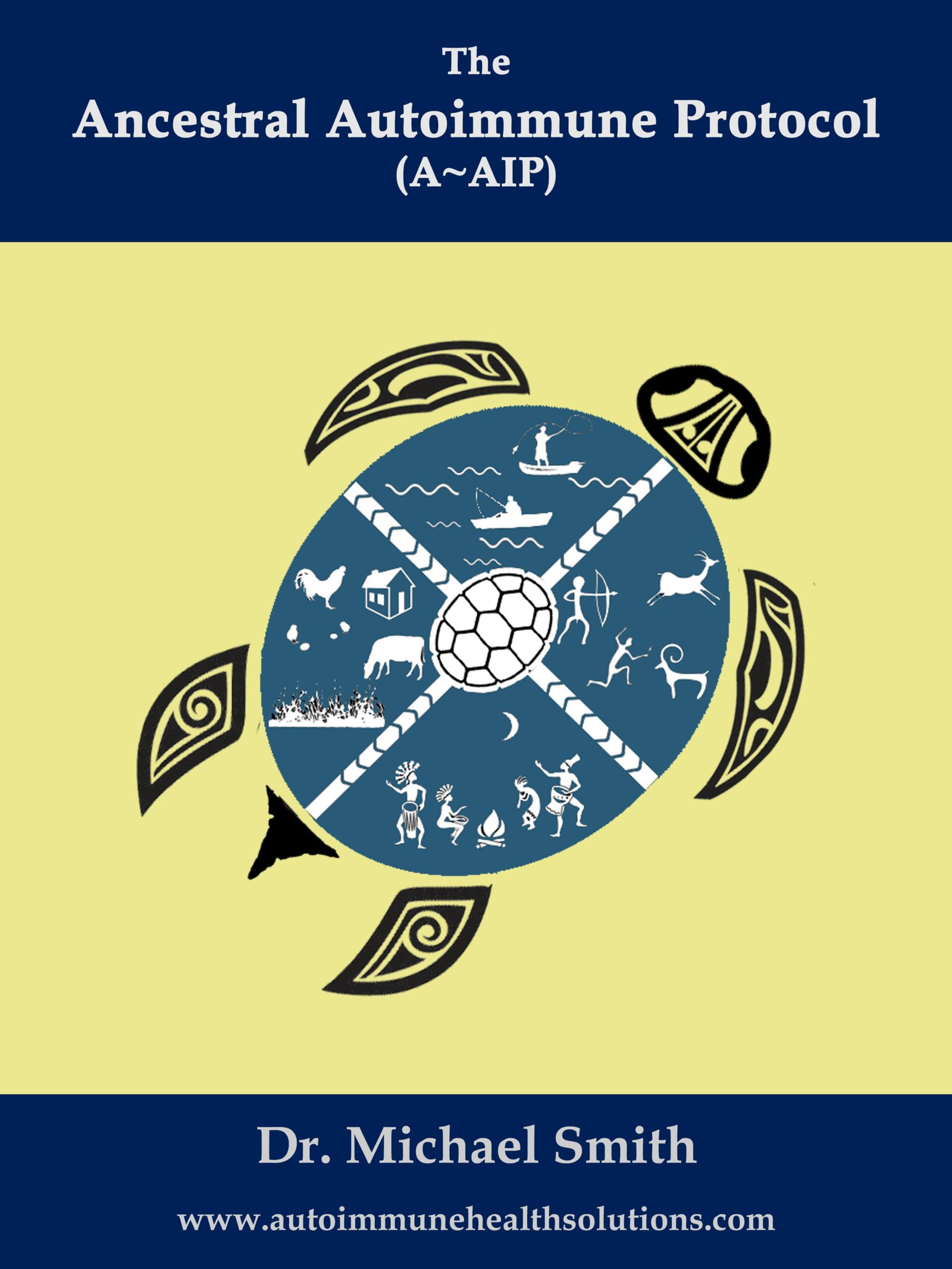Restore Your Adaptability
Realign Your Mindset and Lifestyle
Meeting the Needs of Your 40 Trillion Cells
Now that your immune system has calmed down and has had some time to focus on tissue repair, it is time to expand your diet and test your body’s adaptability.
First, you want to explore an even more nutrient-dense diet. This will help fuel most aspects of your physiology even more abundantly. You have around 40 trillion cells, or little versions of you, that may have been struggling for a while. Your objective and opportunity is to improve the adaptability of every organ, system, tissue, and cell – while being mindful that your immune system has been through a lot.
Second, you want to gradually reintroduce foods based on your food sensitivity panel, your intuition, or the list I will provide. Nuts and seeds can be very nutritious and are good sources of fatty acids, protein, fibre, and minerals, like potassium, magnesium, zinc, and calcium. If you tolerate these foods for a few weeks, then you may also be able to try some pseudo-grains like amaranth, buckwheat, quinoa, or their flours for baking, wraps, flatbreads, bannock, etc.
Before you go shopping for all of these ingredients, keep in mind that you are going to get the most precise information, and save yourself months or years of guessing, by going through this process step-by-step.
This is why I recommend many patients get a food sensitivity panel done before they begin any therapeutic diet. If you were to test for food sensitivities after 2 – 3 months of rehabilitating your immune system, your results will be quite different.

Third, reassess your place and momentum on the Autoimmune Spectrum.
-
-
- Did you start in Stage Two, Three, Four, or Stage Five?
- How long did it take to reduce your symptoms on Phase One and Two of the Ancestral-AIP?
- Have you gained a sense of your most intense triggers?
- What was your score on the Autoimmunity Warning Signs Questionnaire?
-
The primary focus of Phase Three of the Ancestral-AIP is restoring the innate adaptability of every system and structure in your body. Retesting your hormones, neurotransmitters, inflammatory and immunoreactive processes, the efficiency of your liver, and the health of your gut and microbiome can help you and your clinician make some important decisions.
If that kind of lab testing is out of reach right now, get a symptom journal and begin having regular self-assessment check-ups. I ask my patients to make a list of their ‘dashboard light’ symptoms, the ones that come and go erratically, and the ones that have been around the longest, and 2 or 3 times a week write down a number like 4 out of 10.
If you begin this practice right away, you will have a clearer sense of what is changing as you gradually reintroduce each food.
The other focus of Phase Three is to Realign your relationship with your vitality and what your future diet and lifestyle may need to be to keep you healthy in the long term. This is more of a personal and philosophical subject so I will address it quickly here.
Most Autoimmune conditions take a long time to be diagnosed. There are some that come out of the blue, but in both cases, your response needs to be consistent, specific, and long term. Making peace with how your life has changed is essential.
Reversing or preventing these conditions is possible. Living with this kind of a clinical diagnosis without relying on potentially life-altering medications is possible. The expression, ‘Fork in the road’ exists because many of us face life-changing decisions a few times in our lives.
This is not about fair, or who’s fault this situation is. This is about choosing health, autonomy, and the possibility that you live a relatively normal life.
In Phase Four, your diet will become fairly close to normal. Phase three is a chance to learn as much as possible about your immune system’s grudges before you start eating pizza again.
In this article, I will discuss:
-
-
- Epigenetics and Nutrigenomic Medicine
- A Nutrient-Dense Diet
- Rejuvenating Your Metabolism
- Fitness and Neuroplasticity
- Embodied Mindfulness
- Systemic Supplementation
- Breathwork and Spiritual Breakthroughs
-
The Four Phases of the Ancestral Autoimmune Protocol
If you have not read the articles on the other Phases,
they may have some important answers, perspective, and guidance.
Epigenetics and Nutrigenomic Medicine
Until recently, most of us have lived with the understanding that our DNA is what determines your health.
It used to look like this. Just like a black-jack dealer, your DNA deals you a hand. Maybe you get a winning hand and maybe you get a chronic illness.
More recent research has shown that your DNA works more like a back—up drive for your anatomy and physiology. It is your epigenetic enzyme system that actually determines whether your DNA will express any genes it may have for either better health or any disease that may run in your family.
Every single cell in your body contains an over six feet long DNA strand, which needs to fit inside your 15-micron nucleus. In order to fit into its tiny container, your DNA is wrapped around bead-like proteins called histones, and then these ‘beads-on-a-string’ are tightly wound up into chromosomes. In order to turn on a gene, the packaging around the gene needs to be loosened by adding biochemical compounds to that specific “bead”. When a gene is turned off, the gene is tightly packaged by adding compounds such as methyl groups directly to the DNA. Technically speaking, epigenetics is the pattern of these compounds on the DNA and its supporting histone structure. This gives DNA two separate identities; one being the DNA code and the other the specific pattern of epigenetic packaging.
Each of us has highly variable epigenetic patterns that can determine which genes are expressed and which are left dormant. This variability arises from your environment; such as diet, pollution, chronic inflammation and stress can all alter many epigenetic functions and systems, changing which genes are turned on and off to ultimately affect physiological function.
Your social environment has also been identified as an input in early-life epigenetic programming.
To ensure that your epigenetic system is doing its best to keep you healthy, I encourage you to continue eating a nutrient-dense diet. If you are looking for a deeper relationship with epigenetics and other approaches, read the article Evolution and <?>Epigenetic Resets
If you want to be more precise you can get your genetic profile tested to see if you have any specific nutritional needs due to genetic tendencies towards certain classes of disease.
Below is an example of how a gene can be altered through epigenetics.
Nutrigenomics, Methylation, and the MTHFR Gene
In 2003, a genetic study called the Human Genome Project was completed.
Because of that study, it was discovered that about 40% of people had a defective gene. This gene controls an enzyme called Methylenetetrahydrofolate Reductase (MTHFR). When it is working right, the MTHFR gene begins a multi-step chemical breakdown process called methylation.
Methylation is complicated, but it goes something like this:
- The MTHFR enzyme works with a specific form of Folate (Vitamin B9), breaking it down from 5,10-methylenetetrahydrofolate to 5-methyltetrahydrofolate.
- 5-methyltetrahydrofolate helps convert the amino acid homocysteine down to another essential amino acid, methionine, which is used by your body to make proteins, utilize antioxidants, and to assist your liver to process the fats in your diet.
- Methionine helps with depression and even inflammation. It also helps convert estradiol (E2) into estriol (E3)!
- Methionine is converted in your liver into SAM-e (s-adenosylmethionine), which is anti-inflammatory, supports your immune system, helps activate the breakdown of neurotransmitters like serotonin, dopamine and melatonin, and is involved in the growth, repair and maintenance of your cells.
By ensuring that you are getting just the right amount of Folate, in just the right form, can regulate the expression or function of this gene. This process is now referred to as Nutrigenomic medicine or the manipulation of genetic function with specific nutrients.
This application of clinical science is in its early stages. There is still a great deal to learn. Before exploring this possibility, find a clinician who has taken the advanced training necessary to help your move forward into the future of medicine.
It is promising, however, to know that you may be able to modulate the expression of many genes that you may carry. If this feels inspiring, get your genes tested for any Single Nucleotide Polymorphisms (SNPs – pronounced ‘snips’), or measurable variations in your genetic potential and genetic limits.
A Nutrient-Dense Diet
If you want to reinvigorate every biochemical pathway and ensure you have the resources to make every biochemical substance your body needs, then a Nutrient-Dense diet is the obvious choice.
The first thing to consider, when finding out how nutrient-dense any food you eat might be, is to look at the proportions of nutrients to calories.
Ideally, there should be an abundance of nutrients in your diet and enough calories to get you through your day.
Nutrients are essential substances like vitamins and minerals, fats (fatty acids) and amino acids (proteins), bioflavonoids and anti-oxidants.
Calories come from all of your foods but are much more abundant in high-carbohydrate foods like roots and grains. Your body can use many nutrients as fuel. You gain calories by breaking down fats and oils into fatty acids and proteins into amino acids. In the process of producing all of that energy, you get the building blocks of life.
You get the most abundant energy from large carbohydrates such as starchy roots, grains, and beans by breaking them down into glucose, a simple carbohydrate, which is a primary fuel for your body. There may be some nutrients as well, but the carbohydrate component is just a source of energy.
That is why we have essential fatty acids, essential amino acids, but no essential carbohydrates.

Generally, the more natural and fresh a food is, the more nutrient-dense it is, and the more processed a food is the more anti-nutrient and calorie intense it is.
I think most of us can agree that a fresh berry smoothie with healthy oil, hemp hearts, raw cacao, greens powder and coconut milk is a more nutrient-dense breakfast than a bowl of processed and sweetened breakfast cereal with pasteurized milk and extra sugar to boot. High-calorie foods that increase your blood sugar too rapidly is an active trigger for many Autoimmune conditions.
I often use the image of money.
Eating processed cereal and sugar is like being given 1000 dollars that you have to spend in 2 hours and then give away whatever you buy – and then pay interest on the adventure. The interest is the disorientation of your metabolism and any inflammation and tissue damage that is triggered by any antinutrients. If you have not heard about the antinutrients in many foods, see this article, The Standard AIP.
If you eat a nutrient-dense meal, it is like being given a thousand dollars and a list of the most useful things that you need to be healthy and happy. In this case, you get to keep everything you received and are richer in every way.
The next time you go shopping, stick to the wall of your grocery store. Afterwards, look in your shopping cart and you will notice that you are well on your way to a nutrient-dense diet.
Below is a list of nutrient-dense foods. It is not in any precise order and I have focused primarily on foods that are readily available in North America. If you want to learn more about the science of Nutrient Density, see this article.<?>
Examples of Nutrient-Dense Foods
Plants |
Roots |
Fruits |
Fats and Oils |
Proteins |
|
Kale Collards Chard Spinach Broccoli Squash Seaweeds |
Carrots Parsnips Turnips Beets Yams |
Goji Berries Pomegranates Raspberries Blueberries Grapes |
Cod Liver Oil Salmon Oil Flax Oil Hemp Oil Coconut Oil Butter (organic) |
Eggs Liver Kidneys Wild Game Trout Salmon Free-Range Chicken Grass-Fed Bison/Beef |
Soaking Plant Embryos
If you are a big fan of plant embryos (seeds, nuts, grains and beans), you just need to prepare them properly.
- Ideally, they should all be soaked and preferably in a ceramic or glass container.
- Take 1 cup of plant embryos and add 3 cups of water, hot water for beans and warm water for the others.
- For grains and beans add 1/4 cup of acid (vinegar or lemon juice) and for nuts and seeds add a splash of acid and a pinch of salt.
- Adding seaweed to grains and beans also helps them become more digestible.
- Soak them all for about 24 hours and switch out the water mixture once or twice during that time.
- If beans tend to give you a lot of gas, then soak them for 36 hours and replace the water/acid mixture more often.
Nuts and seeds can be dried, even flavoured, by putting them in a dehydrator or in the oven after they have been soaked. The lower the temperature, the better for the fats and oils in these foods (115 – 120 degrees F is ideal).
Soaked and dried nuts should be kept in the fridge where they will be good for a few weeks.
Another strategy for making grains and beans more digestible is to cook them in fat like risotto and jambalaya. For meals like this, you can soak the grains in an equal mixture of vinegar and water for half an hour (just enough to cover). This ensures that the starches soak up more fat. If you were to soak a grain for 24 hours and then try and make risotto, the grain would be too full of water to soak up the fat properly and you would have to eat mushy risotto.
Your Ancestral AIP Shopping List
Below is a list of common foods and recipe ideas to choose from.
More Seafood and Sea vegetables
Salmon, Oysters, Prawns, Scallops, Herring, and Sardines.
Sea Vegetables (Arame, Kelp, Kombu, Dulse).
Meat and Poultry
Beef, Pork, Lamb, Goat, Venison, Elk, Boar, Chicken, Turkey, Duck, Goose, Quail, Ostrich.
Nose to Tail
Liver, Kidneys, Hearts, Tripe Necks, Tails, Hocks, Feet, Skins, and Tongues.
Broths, Shanks, Ribs, Steaks, Wings, Braised Meat.
Fermented Foods
Sauerkraut, Kimchi, Kvaas, Kombucha, Kefir, Ginger Bug, Whey, and Yogurt.
High Starch Vegetables
Yams, Sweet Potatoes, Turnips, Beets, Parsnips, Rutabagas, and Squash
Grains, Beans, and Pseudograins (and Their Flour and Pasta)
Wild Rice, Split Peas, Split Mung Beans, Quinoa, Buckwheat, and Lentils
Nuts and Seeds
Pumpkin Seeds, Pistachios, Walnuts, Chia Seeds, Hemp Hearts, Cashews.
Fruit, Berries and Vegetables
Apples, Pears, Bananas, Blueberries, Raspberries, Tart Cherries, Grapes, and Strawberries.
Greens, Cucumbers, Avocados, Celery, Olives, Beets, Radishes, Broccoli, Cabbage, Kale, Collards, Tomatoes*, Bell Peppers*, Potatoes*, and Chard
Fats, Oils, and Spices
Tallow, Bacon Grease, Olive Oil, Coconut Oil, Avocado Oil, Sesame Oil, Grapeseed Oil, Sunflower Oil, Suet, Turmeric, Ginger, Garlic, Cinnamon, Rosemary, and Thyme, Cumin, Paprika*, Cayenne*, and every other spice that you enjoy and tolerate.
*If you have passed your Nightshade Challenge.



A Few Recipe Ideas
Braised Oxtails and Root Smash
Beef Pho
Chicken Wings and Sweet Potato Fries
Pork Ribs and Coleslaw
Braised Turkey Necks
Arctic Char Chowder
Braised Lamb Shanks
Liver Patee
Lamb Stew
Prawn Pesto and ‘Pasta’
Smoothies, Blender Salads and Pureed Meals.
Image it is winter 10,000 years ago. You would lucky to eat this way for three months.
After one to three months it will be time to enter Phase Three!
Rejuvenating Your Metabolism
In Phase Three of the Ancestral AIP, your metabolism needs a balance of Honemostaisis and Hormesis.
Hormesis is a biological phenomenon where you receive a beneficial effect like improved health, better stress tolerance, tissue repair, or longevity results, from exposure to something that challenges your physiology in a specific way.
Initially, when we challenge ourselves with something difficult such as a cold shower, we increase our adaptability to being cold. You need certain stressors to improve your ability to handle more of that stressor, and most other stressors – up to a point.
Sometimes we all need to challenge a system, organ, or muscle to help it get stronger and more adaptable.
Phase Three is a great time to get some updated lab work done. If you have taken your time through Phase One and Two, you have given your immune system and metabolism two to three months to reorient themselves.
I usually test for the following:
- Cortisol rhythm, waking pattern
- Steroid Hormone Adaptability (Dutch Test)
- DHEA and Cortisol Balance
- Intestinal Permeability
- Intestinal Pathogens
- Oxidative Stress
- Mediated Release – Immune sensitivity test
If lab testing is not possible, then make sure you maintain a symptom change and baseline assessment journal.
For the next few months or years, you will be eating a nutrient-dense diet.
This may sound impossible but I find living this way enjoyable and I am a foodie who writes cookbooks. I call this protocol the Ancestral Autoimmune Protocol because I am absolutely certain that eating the ways our ancestors used to can help resolve many aspects of the modern chronic metabolic crisis.
If you can stay grounded and go slowly, Phase Three will not only continue improving your immune system, it will also continue regulating your blood sugar, rebuilding your connective tissue and nourishing every cell.
My ebook Returning to an Ancestral Diet Insert <?>
I am most concerned with hormone and neurotransmitter balance in Phase Three. Stress, poor sleep, unresolved trauma, all have to met with adaptability and a lot of mindfulness. The next few months could be life-changing if you allow every aspect of your body and being to heal.
Your hormone and neurotransmitter balance is mostly determined by your lifestyle and your state of mind.
Hormonal, and neurotransmitter imbalances can also determine your lifestyle and your state of mind. If you are consistent and continue to commit to your health, get the testing (if needed), adjust your supplements, strategies and practices as needed, your metabolism will thank for your Ancestral Reset<?>
Fitness and Neuroplasticity
Fitness is an Engine, Made of Many Engines
Depending on the kind of exercise you are doing, the intensity, and the frequency, you can expect different and often specific results. During Phase Three, you need to challenge your connective tissues and ‘push your body’ towards better circulation, better sleep, and even more tissue repair.
Taking Your Resistance Training to the Next Level!
As you exercise more intensely, your body will also start secreting more Human Growth Hormone (HGH), which not only helps your muscles grow but tells your whole body and mind to feel energized, nourished and creative. Regular resistance training has also been shown to lower cholesterol (muscle membranes are made of cholesterol), lower blood pressure, as well as improve sleep and libido (sex drive).

Being in good shape can also alleviate depression and anxiety, as well as improves immunity and lymphatic function.
The most profound benefit of being physically fit is the change in your overall attitude. Once you have gained some momentum and are seeing some positive results you will become the positive and empowered person you know is inside you; you become the person with enough self-love, creative energy and purpose to move towards what you want in life with a sense of confidence, enjoyment and ease.
Always check with your primary clinician before beginning any change in your fitness practices.
Besides the short term benefits of improving your metabolism and stimulating tissue repair, adding a few pounds of muscle is like putting money in the bank for your longevity.
Tabata Training
Tabata training was developed in Japan about 20 years ago. This kind of training improves stamina and strength profoundly with little risk of losing muscle mass. Tabata training follows a high intensity of effort for 20 seconds and then rest for 10 seconds. Repeat for eight sets or 4 minutes in total.
Wait at least 2 minutes before starting the next exercise. I like to use the Tabata system of high-intensity interval training to not only build fast-twitch muscle fibres but also for the cross-connections of the muscles of the whole body. I do this by applying a lot of torsional movement.
This brings up an interesting aspect of resistance training. When you are lifting weights you are either doing an isolated exercise or a compound exercise. An isolated exercise means you are only working one muscle which most likely to happen on the big machines that are designed specifically for that purpose. Isolated exercise is great when you are trying to make a certain muscle stronger. Compound exercises cover as many joints and muscles as possible and often require recovering the momentum of the weight you are lifting.
With Tabata Training, I recommend focusing on the compound exercises that require torsion or twisting of your trunk and pelvis. This kind of training creates whole-body coordination as well as amazing core strength. It is also exhausting and I wouldn’t recommend doing more than five exercises (30 minutes) of this kind of training.
Fitness and Neuroplasticity
Any conversation about the health of your brain and preventing degeneration needs to be about Neuroplasticity. Neuroplasticity is the science of how your nervous system, your mind and your brain can learn, repair themselves, stay active and avoid loss of function for as long as possible.
One of the best ways to improve your Neuroplasticity is through complex movement. Sports, hobbies, and practices that keep you active and invested in your Mind/Body interactions and interconnections are a good start. If you want to maximize your Neuroplasticity, you will benefit from a combination of as many of the below opportunities as possible.
- Standing or Moving Meditation
- Deep Stretching
- Resistance Training
- Breathwork
- Prolonged Stillness
- Regular Complete Silence (or natural sounds like rain falling)
- Anything that includes or combines Dancing, Singing, and Music
Seated, Standing or Moving Meditation practices like Qi gong, Tai Chi, and Yoga are popular approaches to reconnecting with your body, posture and breath. By staying on your feet, feeling into your alignment and posture you are putting a natural load on your skeleton and nervous system. By adding gentle and precise movement, you are activating deeper parts of your instinctual nervous system which can reduce stress hormones.
Intentional movement or stillness remind your body that you are a highly adaptable wild animal.
If you were to randomly play with four of the above examples (or add your own) for 5 minutes every morning, you will maximize your neuroplasticity very quickly.
I call this practice, ‘Neuro Boosting.’
Embodied Mindfulness
In my experience mindfulness tends to move in two directions, inward and outward.
With meditation, over time you learn to be the silence behind a silent observer. That is about as inward as most of us need to go.
The most powerful way to explore mindfulness on the outside is through challenging conversations. An intimate conversation with a friend, a vulnerable conversation with a counsellor, or a ‘get out of your own way’ conversation with a coach, can all bring your attention to the things you need to accept and/or change.
In Phase Three, you will have a few months to have these kinds of conversations. I would also encourage you to do some patient goal setting. What can you challenge yourself to do for yourself and for your health and to have the most fun with this process?
Recovering from a chronic illness, shaking off the oppression of a clinical diagnosis, adapting to a slightly or completely different future is serious business. The feeling we call ‘being serious’ is kind of like pent up righteousness. It is about being right, correct, or simply just not waiting for your time.
It is also, quite simply, a source of energy and a reminder to be as adaptable as you possibly can.
All of that takes patience and all of that can be a profound journey. Have the challenging conversations that keep you on the right path – dance to the music of your life.
The long term stress that causes and/or comes from an Autoimmune Disease can change the way your nervous system experiences stress and responds to the world. The more physical, physiological and instinctual the stress is or was determines how much it impacts your Polyvagal Nervous System (PNS). This part of your nervous system helps your whole body adapt to stress. Especially people stress or relationship stress.
Over time, your PNS can give you a default danger signal about your self and your life. This creates physical and somato-emotional changes throughout your whole body. Some of us may need to spend a couple of years recovering our sense of self after a traumatic childhood or a severe illness. Some of us are more fortunate.
This process is the most challenging conversation there is. This is the conversation with the somatic, or ‘felt sense’ experience of your life and of this moment, will tell the truth about your life and your inner world. In Phase Three, you will experience a lot of benefit from engaging in any mind-body practise that helps you feel into any latent instinctual, visceral, personal, or existential constraint or collapse in your body.
How do you feel in your body, right now?
I encourage you to have some challenging conversations. Find out where you are really at with your past and your life. That may not sound fun, but it may be the fastest way back to fun!
Keep connecting and keep dancing!

Systemic Supplementation
(Your clinician will help you be specific in choosing long term adaptive support)
Hormonal Adaptogens
Immune Adaptogens
Neurotransmitter Support
Liver Support
Vascular Circulation Support
Lymphatic Support
Taking breaks from Supplementation
(If you not feeling significantly better yet, ask your clinician about Low Dose Naltrexone -LDN)
Self Regulation and Your State of Being
A Committed Daily Practice has been the advice of sages and wisdom teachers for thousands of years. This practice can be anything that you are drawn to and that challenges any kind of addiction, numbing, existential boredom, depression, or anxiety.
“All Beings Come into Being in a State of Being.” – Meister Eckhart, (1326 AD)
We all live our lives in many states of being. Some of these states become habits that feel like a weight around your neck, other states of being feel like you are having a religious experience. In Phase Three, the states of patience and presence are going to serve you the most.
The gift and benefit of a daily practice, is the process of choosing the states you want to experience throughout your daily life. Since you have just invested a couple of months (or more) in regulating the behaviour of your immune system, you should feel confident trusting your inner strength and determination to challenge your inner status quo.
Just like we all experience our lives subjectively, we also are very individual about what kind of a daily personal ‘state-shifting’ practice will feel just right.

I encourage all of my patients, and I encourage you, to try Meditation, Qi Gong, Yoga, Breathwork, Tai Chi, Ecstatic Movement and a hundred other options for a week each – until you find your daily practice. Or practices.
I introduced the practice of Neuro-Boosting above. This practice of choosing 4 – 6 practices and doing each one for five minutes – in the first hour of your day. You can learn more about your options and what is happening inside of your body, nervous system, and brain, read this series of articles – Complex Movement and Neuroplasticity.
In Phase One and Two, I introduce Breathwork as a profoundly effective form of self-healing. In Phase Three, I recommend going deeper into the experience of self-regulation and begin exploring intentional state-shifting practices. One of the easiest and safest (check with your clinician) ways to ‘alter your conscious experience’ is to lay on the floor and breathing deeply and rapidly. As soon as you feel dizzy go back to breathing normally.
If you notice you feel better over the next few hours, breathwork may become an essential ally. There are some specific Dos and Dont’s to transformational breathwork – so, please learn from a certified instructor.
Phase Three includes an unspoken hope and an important question. We all hope that we are doing enough for our body can heal itself. Many of us also find ourselves asking, ‘If I don’t get better, what else is going on?’
As I have mentioned in other articles, 80% of my Autoimmune patients have experienced significant trauma in their lives. Half of those people have experienced or are still trapped in the cycle of addiction.
Listen to your body!
Take this period of self-care and really get to know yourself. Your life may have some new permanent limitations, especially easy ways to blow off some steam or numb out and chill. Learning to be present and patient is a skill. It takes practice. Learning to shift your state is also a skill. The next three months could be life-changing.
If we all come into being in a state of being, that means any of us can choose how we come into being – every day!
Phase Three – Your Six Pillars at a Glance

YES!
I want to begin my Autoimmune Healing Journey
Please send me a FREE copy of the Autoimmune Protocol Ebook!
Begin your healing journey with this 65-page guide to understanding Autoimmune Disease and the Ancestral approach to restoring healthy immune function from the inside out.
Sign up for a regular newsletter offering you the information and inspiration that has helped thousands of people heal their lives!
We respect your privacy.
You will only receive your FREE Ebook and our newsletter.

Michael Smith is an internationally respected Clinician, Author, and Speaker.
Michael practices Functional Medicine, Acupuncture, and Traditional Chinese Medicine, and encourages his patients to follow an Ancestral approach to lifestyle and diet. Dr. Smith has dedicated the last 25 years to the research and treatment of Chronic Illness and Autoimmune Disease. As an Autoimmune patient, Michael is intimately aware of the devastating impact these conditions can have on your quality of life.





Leave A Comment